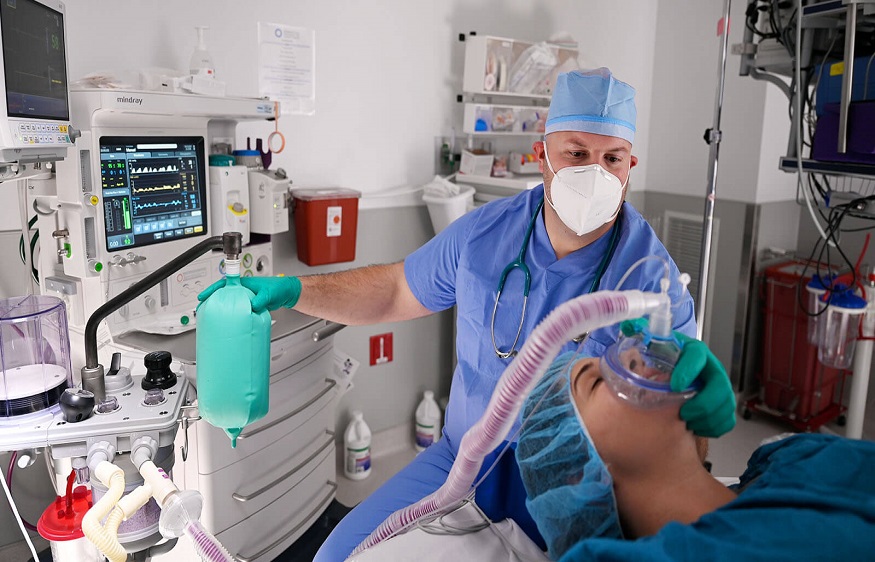Sleep is an enigmatic process where many brain mechanisms are set in motion and about which very little is known. The human being spends about a third of his life sleeping, and while we do it, it is possible to experience dreams, sometimes so vivid that they can become difficult to distinguish from reality.
In 1846, the first public demonstration of anaesthesia by William Morton took place. Until then, surgery and pain had always gone hand in hand. One did not exist without the other. For this reason, the discovery of anaesthesia is one of the great revolutions in the history of human beings.
In a few years, we have gone from suffering during surgery to being induced into a pleasant sleep that makes your time in the operating room less traumatic.
The idea of being able to induce sleep, however, is much older. We commonly find mythological characters related to sleep when we study ancient cultures. If we go back to the book of Genesis 2:21, we can find a similar reference to anaesthetic sleep: “Then the Lord God caused a deep sleep to fall on the man, and he slept; God took one of the ribs from him and closed up the meat in that place.” From the above, we can see that since ancient times there has been the idea or the desire that the induction of deep sleep is an indispensable condition for the successful performance of a painful surgical procedure.
Since then, many mysteries and fears have been related to anaesthesia. The fact of losing control over our own body makes anaesthesia so mysterious and feared by the general population.
Among all the mysteries that surround it, a very repetitive one is if you dream during general anaesthesia.
Is anaesthesia the same as natural sleep?
The reason is the remarkable similarity that there is to the naked eye between being anaesthetised and being asleep. In both states, the patient has a reversibly decreased level of consciousness, appears to be relaxed and has diminished reflexes. In addition, both processes have similar phases and predominance of a type of brain wave. But is anaesthesia the same as natural sleep? It is a recurring question among our patients, and the answer is no.
Sleep is a recurrent natural state characterised by decreased or absent consciousness, sensory activity, and inactivity of nearly all voluntary muscles. When one is subjected to general anaesthesia, what is induced by drugs is a coma (shallow level of consciousness), analgesia (no pain) and, usually, neuromuscular relaxation (paralysed). Therefore, being anaesthetised is not the same as being asleep.
It is easy to understand the difference if one thinks it would be impossible to take advantage of a person’s night’s sleep to perform a surgical intervention without waking him up.
Natural sleep is divided into REM and non-REM sleep. The first refers to a state with increased brain activity, irregular eye movements, loss of muscle tone and fluctuation in constants such as heart rate and blood pressure.
It is in REM sleep that dreams are more realistic, more vivid, and more challenging to differentiate from reality.
In contrast, non-REM sleep is deep and refreshing, with decreased blood pressure and vascular tone, and dreams, which occur less frequently, tend to be less vivid.
Every time we sleep, we go through many stages in which these two types of sleep alternate, both being necessary from a biological point of view.
General anaesthesia and non-REM sleep
The advancement of science has determined that general anaesthesia with adequate depth is quite similar to non-REM sleep, which is why, a priori, we would think that it is not so common to dream during the surgical act. The reality is that dreaming during anaesthesia is possible but conditioned to some characteristics related to the anaesthetic technique used by the anesthesiologist and specific features of the patient.
In practice, patients report having dreamed during anaesthesia with relative frequency (10-36%). Little is known about when and how they occur, but they are similar to normal sleep and are generally described as a pleasurable experience.
It appears that young female patients who have received ketamine during anaesthesia are the most likely to dream. Also predisposing to dreaming is using intravenous rather than inhalational anaesthetic agents and receiving light anaesthesia (closer to awake).
Although we still do not know if the neural mechanism by which dreams occur during anaesthesia is comparable to that of natural sleep, the emotional state can affect the content of goals in both situations. Some studies show that patients with anxiety or depression are likelier to have dreams with harmful or unpleasant content.
As a result of these studies, it is common in the operating room to listen to the anesthesiologist before starting anaesthesia, asking the patient to think of something pleasant, a hobby or a vacation. When the patient falls asleep peacefully and thinks of something lovely, it is more likely that he will dream something satisfying and that the awakening will also be of these characteristics. In contrast, if the onset of anaesthesia is characterised by nervousness, worry, or discomfort, awakening may be similar.
Many of the dreams patients report have to do with social gatherings and sensory experiences, such as having heard noises similar to those that can be heard in the operating room (people talking, electronic sounds, etc.). This raised whether dreams during anaesthesia occur when the patient is insufficiently anaesthetised. It is believed that this type of dream occurs shortly before awakening from anaesthesia, but in any case, studies do not confirm this idea. Other studies evaluated the relationship between anaesthetic depth (using the values of a device that anesthesiologists use to know how asleep our patient is) and dreams. What was observed was that a certain anaesthetic depth was needed to be able to dream.
Namely,
What is clear is that throughout the history of humanity, the dream has been a mystery and continues to be. Anaesthesia was born less than 200 years ago, revolutionising the medical world by eliminating the pain of millions of people, and yet, we still have a lot to know. Perhaps we will never fully understand what happens in our brain during sleep and anaesthesia, but, from our point of view, a certain halo of mystery makes our profession much more beautiful.



